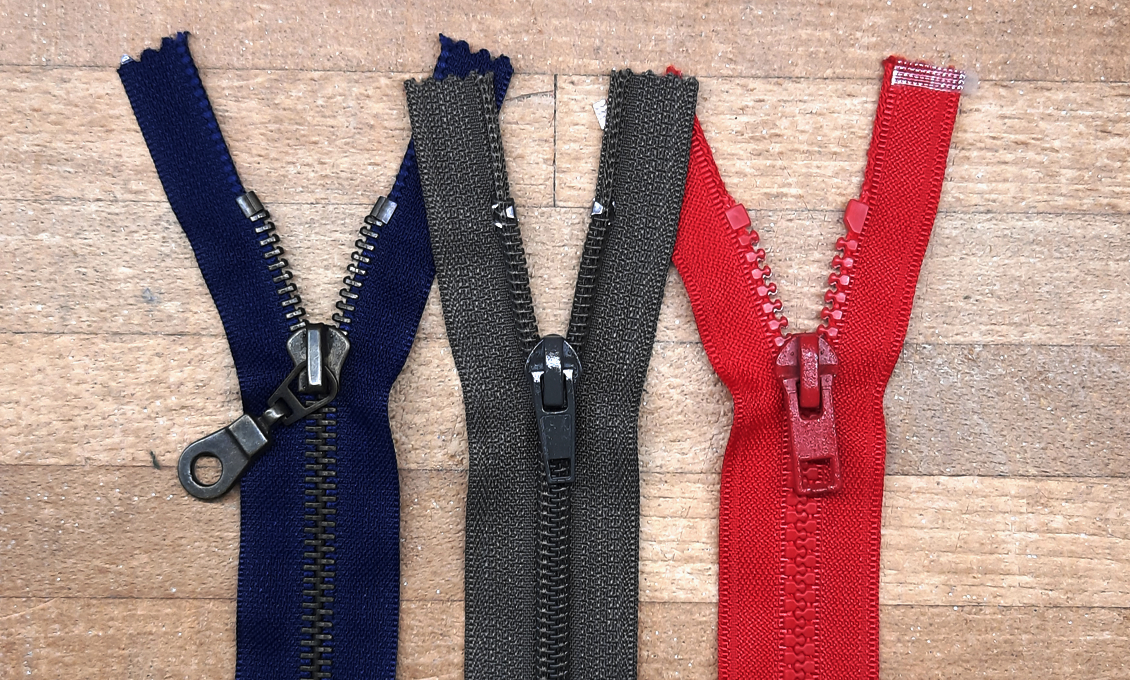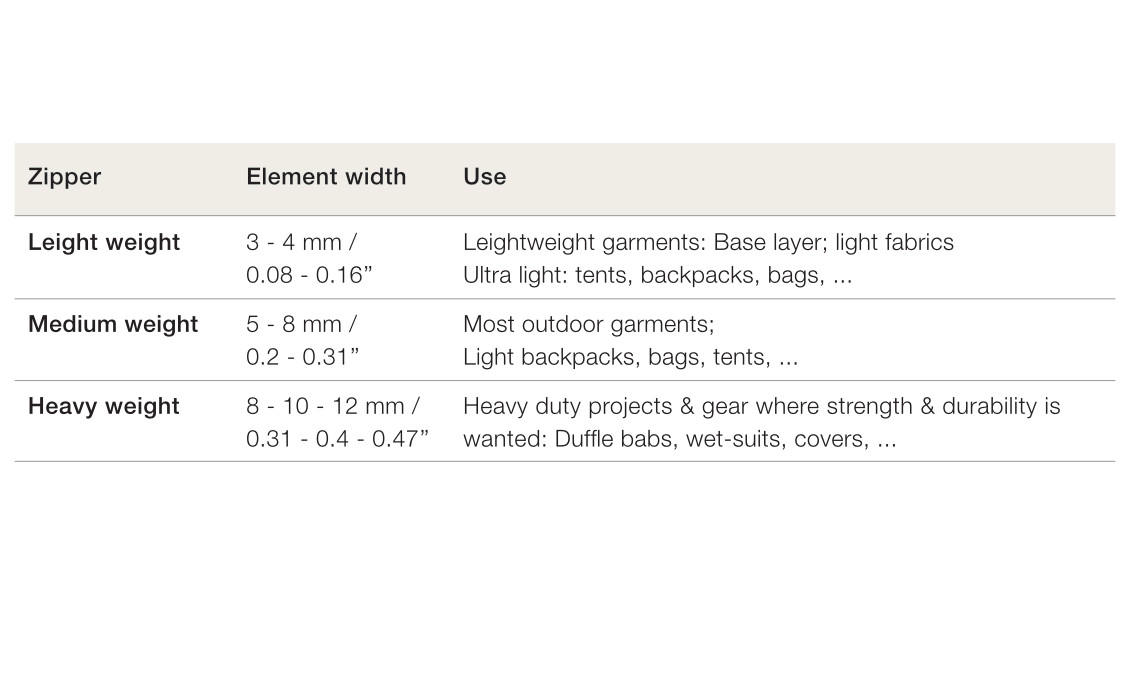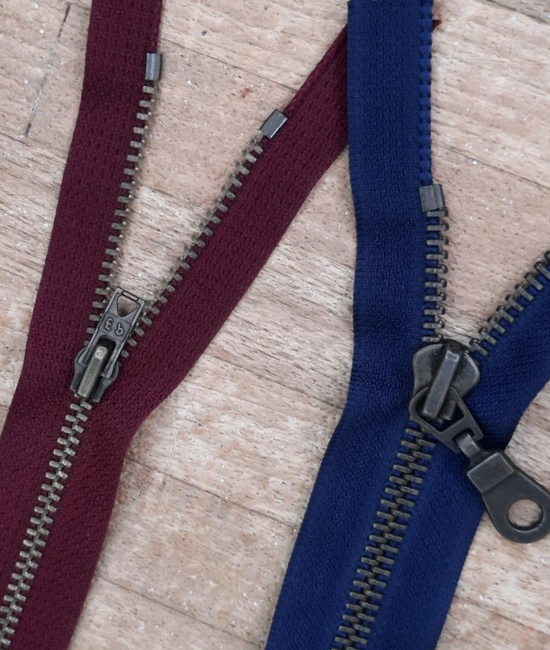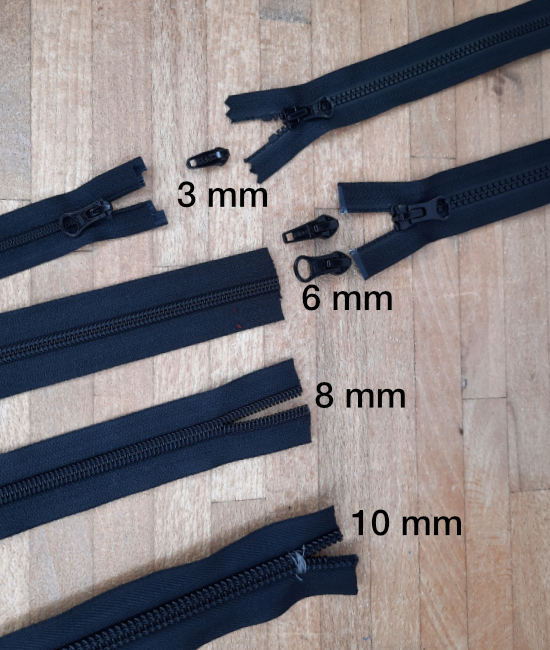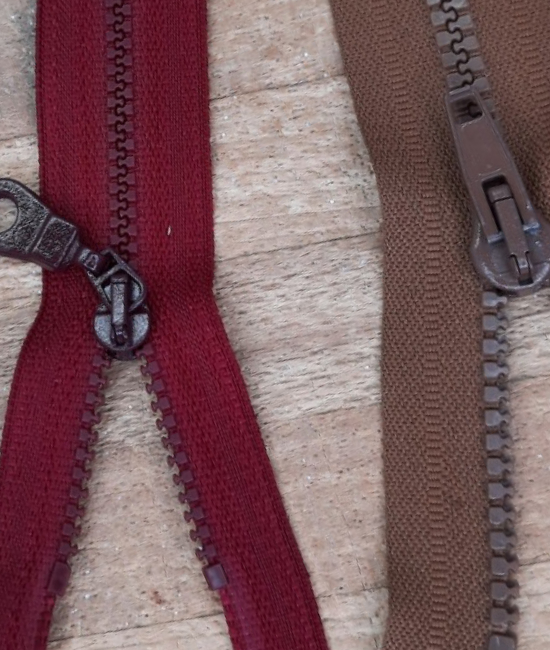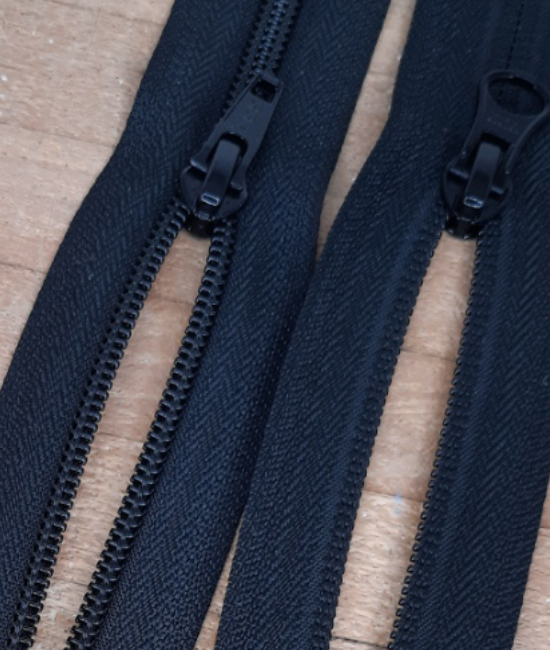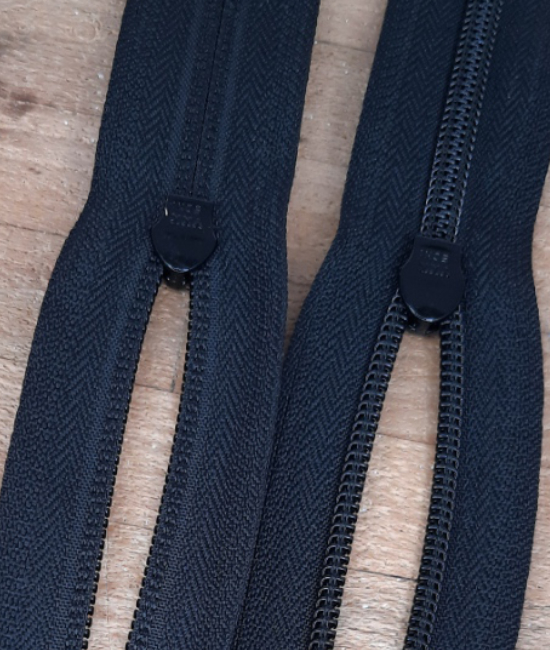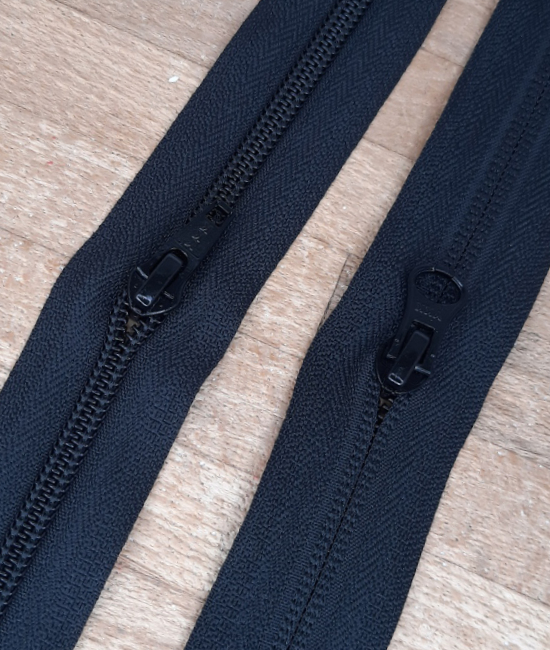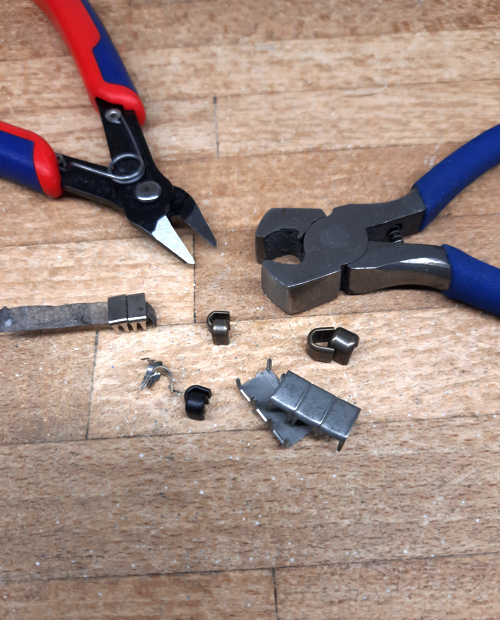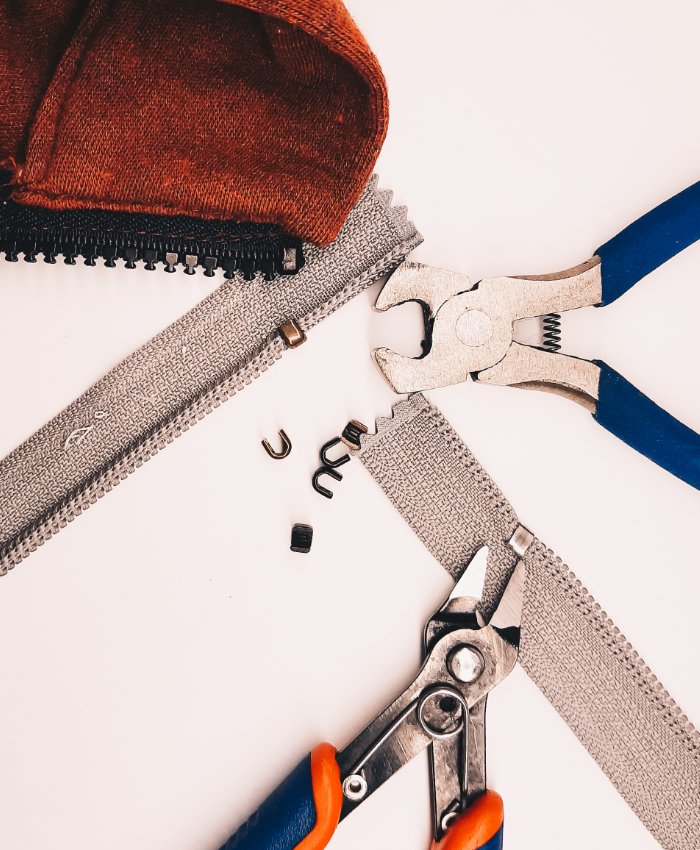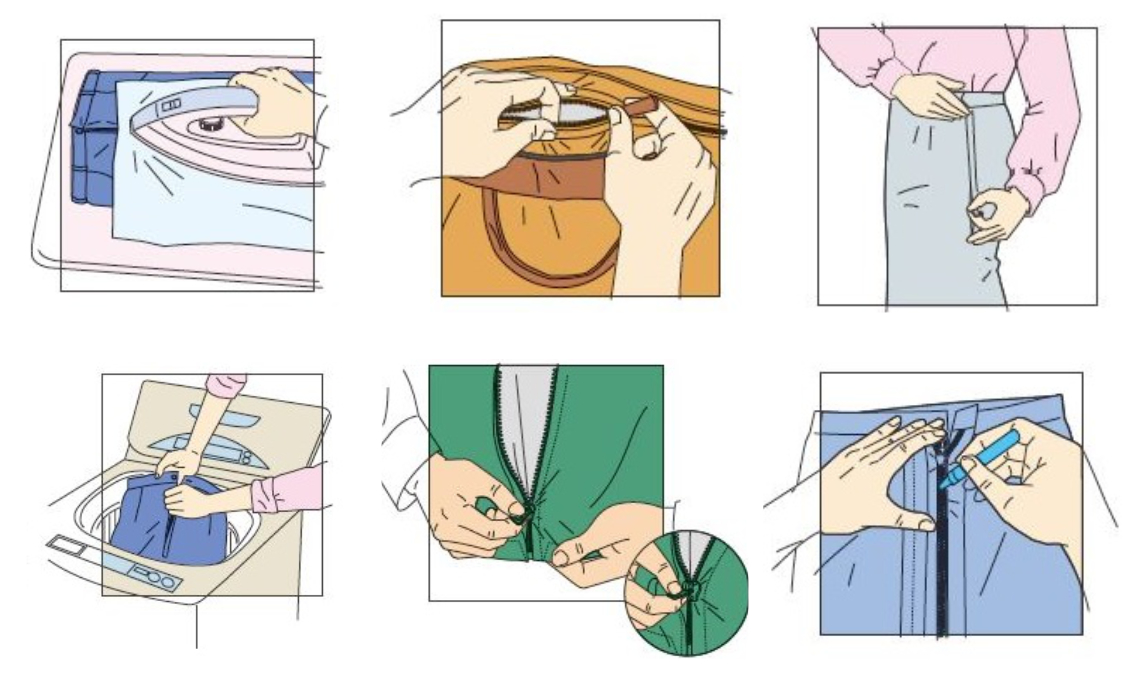One-Way Zippers
One-way separating zippers split your garment from the top down and the zipper has one slider.
Use these zippers where you want to for example split-open the garment or project piece, like in jackets, separating pants legs, bags, backpacks, as pocket zippers .... .
Two-Way Zippers
These zippers have two sliders. Either to separate two pieces from each other or to split-open the pieces from either end. Splitting can be done in two different ways:
'slider bottom' to 'slider bottom' opens into an X or
'slider head' to 'slider head' opens into an O.
In jackets, 'slider bottom to bottom' two-way zippers are not as durable as one-way zippers, as they break faster but they offer a wide range of flexibility when you wear it.
Note: All sold zippers come in fixed length and get longer in 2 - 5 cm (0.8 -2") intervals. The length can easily be ajusted, either at the top-end with stoppers, or at the bottom-end with 1 cm (0.4") wide ribbon.
